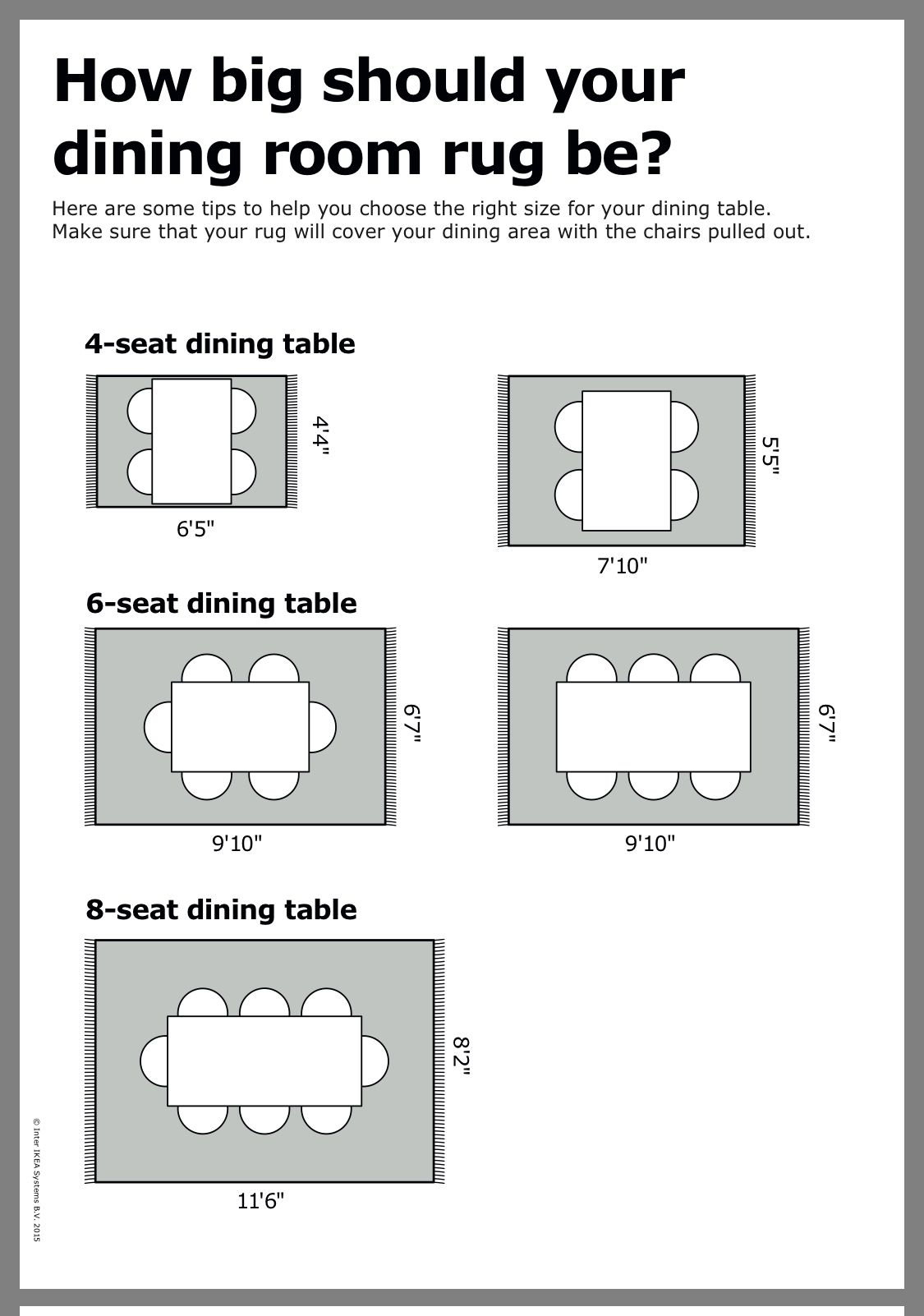When it comes to decorating your dining room, the right area rug can make all the difference. It’s not just about adding style and comfort to your space—it’s about creating a cohesive look that ties your dining area together. However, choosing the right size can be tricky. This guide will walk you through the steps of finding the perfect rug size for your dining room, considering your table, chairs, and the overall layout of the room.
Why Rug Size Matters
Before we dive into measurements, let’s talk about why nailing the right rug size is crucial for your dining room:
- Functionality: A properly sized rug ensures that chairs can move freely without catching on the edges, preventing tripping hazards and ensuring everyone can sit comfortably.
- Aesthetics: The rug acts as a visual anchor, defining your dining area within a larger room. It can complement your table shape and size, bringing a sense of harmony to the overall design. Imagine a beautiful frame around a captivating painting—that’s what the right rug does for your dining table.
Finding Your Perfect Fit: A Step-by-Step Guide
Choosing the right rug size doesn’t have to be complicated. Follow these easy steps to find the perfect fit:
Step 1: Measure Your Dining Table
Using a measuring tape or yardstick, measure the length and width of your dining table in feet. Jot down these measurements—they’re your starting point.
Step 2: Factor in Chair Clearance
Think about how annoying it is to have chair legs getting stuck on the edge of a rug. To avoid this, add 2 feet to both the length and width of your table measurements. This extra space, often referred to as “chair clearance,” ensures enough room for chairs to pull out comfortably without catching on the rug.
Step 3: Consider Room Dimensions
While you want a rug large enough to accommodate your table and chairs, you don’t want it to overwhelm the entire room. A good rule of thumb is to aim for at least 18-24 inches of bare floor space between the edges of the rug and the walls. This visual break helps the rug stand out and prevents the room from feeling cramped.
Rug Size Chart: A Quick Reference
To give you a visual, here’s a handy chart with common rug sizes and the dining table sizes they typically work well with:
| Rug Size | Table Size |
|---|---|
| 5′ x 7′ | Small, round, or square tables, dinettes |
| 6′ x 9′ | Tables that seat 4, either rectangular or square |
| 8′ x 10′ | Comfortably fits a 6-seater rectangular or oval table |
| 9′ x 12′ | Designed for larger gatherings, fits an 8-seater rectangular or oval table |
| 10′ x 14′ and up | Ideal for those who love to entertain and have large dining tables that seat 10 or more |
Shape Matters: Finding the Right Style
While size is key, the shape of your rug can dramatically impact how your dining room looks and feels:
- Rectangular Rugs: The most popular and versatile choice, rectangular rugs work beautifully with both rectangular and square tables.
- Round Rugs: Round rugs can soften the look of square or round tables. They’re an excellent choice for smaller dining areas as they add visual interest and can make the space feel larger.
- Square Rugs: If you have a square table and aim for a sense of symmetry, a square rug is a natural fit.
What About Round Tables?
Let’s say you have a 60-inch round table. A common question is, “What size round rug do I need?” In this case, a rug that’s at least 9 feet in diameter is recommended. This size ensures that when chairs are pulled out, all four legs remain comfortably on the rug.
Don’t be afraid to go even bigger if you have the space! A 10-foot or even a 12-foot rug can visually open up the room and create a grander feel. This is particularly effective in open-concept homes where a larger rug helps define the dining area.
Material Matters: Choosing Durability
Dining rooms are high-traffic areas prone to spills and crumbs. Opting for a durable and easy-to-clean rug material is essential. Excellent options include:
- Wool: Known for its durability, natural stain resistance, and luxurious feel.
- Polypropylene: A synthetic fiber that is highly stain-resistant, easy to clean, and often more budget-friendly than wool.
- Synthetic Blends: Many rugs are made from blends of natural and synthetic fibers, offering a balance of durability, stain resistance, and affordability.
Don’t Be Afraid to Get Creative!
Remember, these are guidelines, not hard and fast rules! Feel free to experiment with different sizes, shapes, and materials to find what best suits your space, style, and needs. You can even layer rugs for added depth and visual interest.
When choosing a dining room area rug, it’s essential to find one that fits the size of your room and complements your furniture. Dining room area rugs can help to define the space and add a touch of style to your dining room. Don’t forget about your lighting! Hanging light fixtures can add drama to your dining room. Explore the variety of styles available to match your decor, from traditional to modern. Dining room light fixtures hanging can help create a warm and inviting atmosphere in your dining room.
Ultimately, the most important thing is to choose a rug you love—one that complements your style and makes your dining room a welcoming and stylish haven for family and friends.
- The Best Battery Picture Lamps for Effortless Artwork Illumination - April 1, 2025
- Double Sink Bath Vanity Tops: A Buyer’s Guide - April 1, 2025
- Bath Towel Measurements: A Complete Guide to Choosing the Right Size - April 1, 2025










